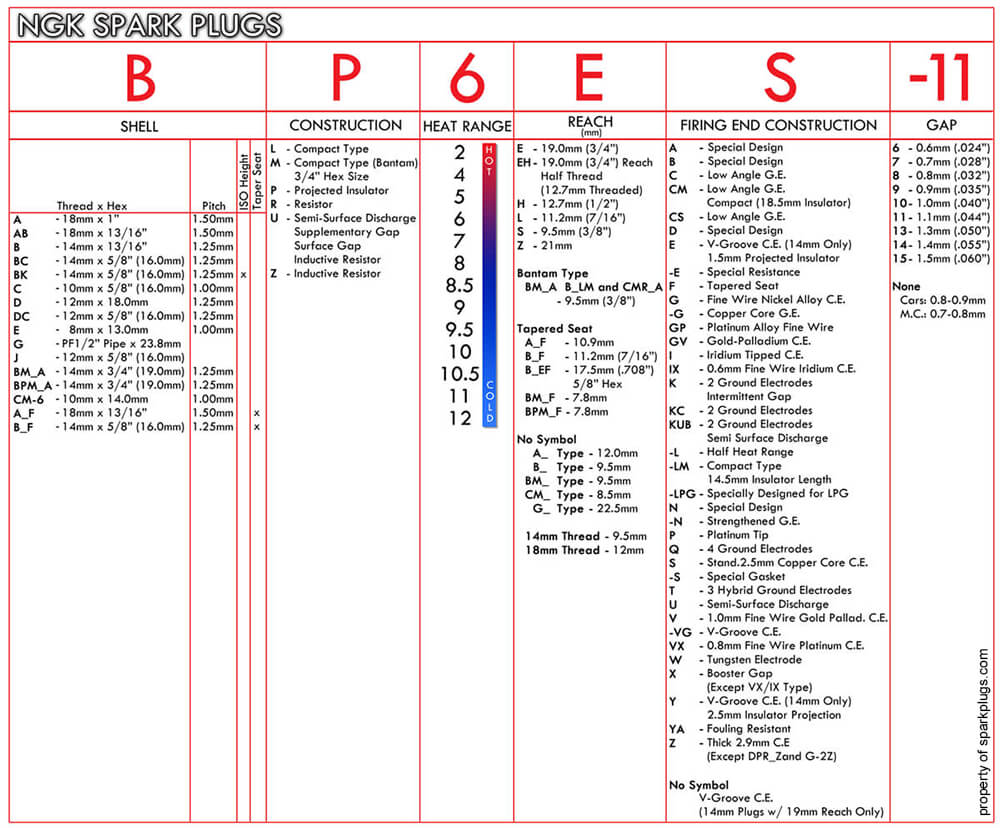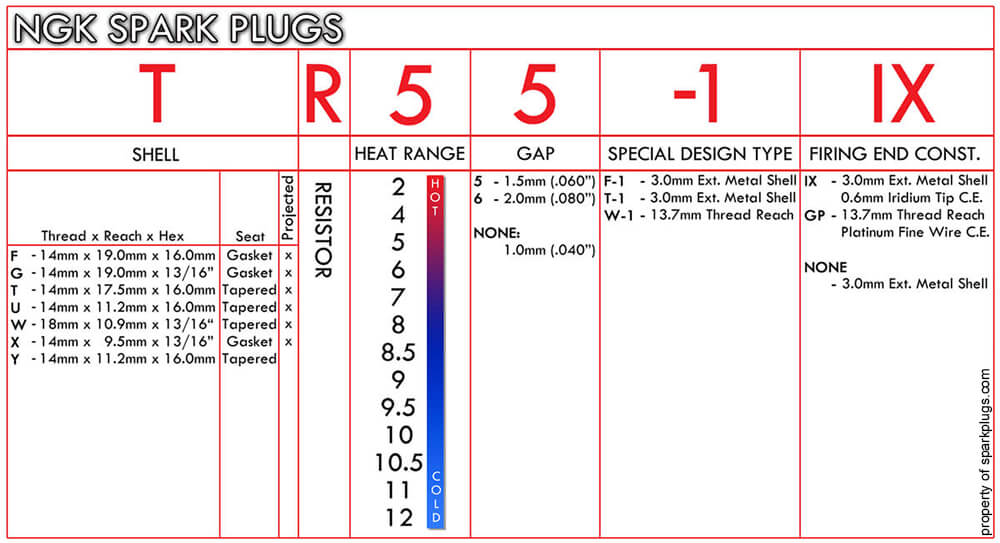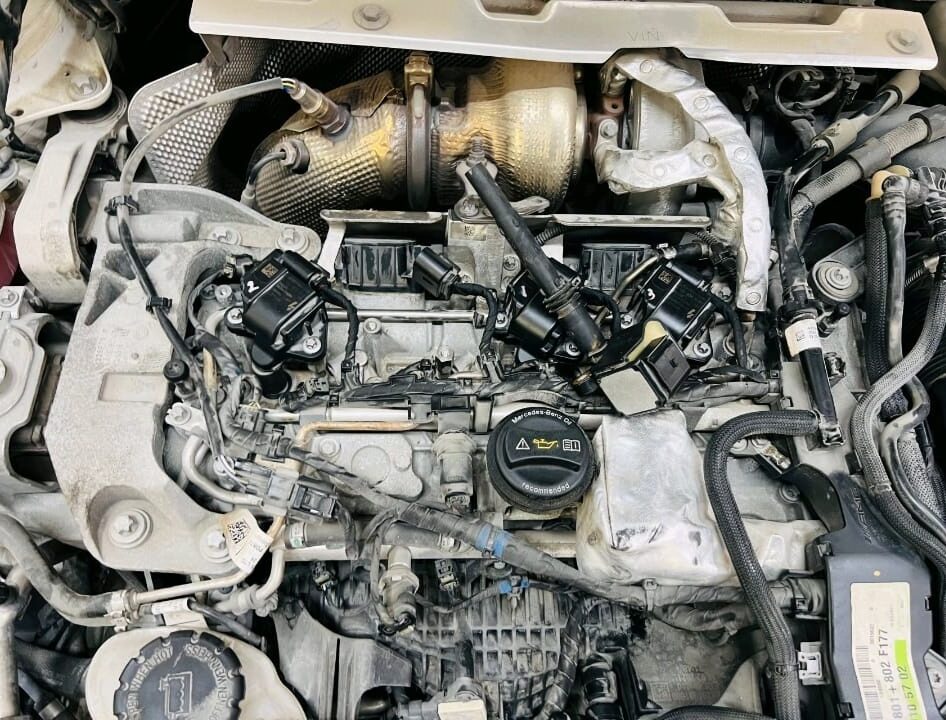The NGK spark plug gap chart lists the recommended gap sizes for different NGK spark plugs, ensuring optimal engine performance and fuel efficiency. Always follow the specified gap for best results.
When it comes to maintaining the vehicle, the smallest components can make a significant difference in how well the engine performs. One such component is the spark plug. The spark plug is crucial in igniting the air-fuel mixture in your engine’s combustion chamber, and its performance directly impacts your engine’s power, fuel efficiency, and emissions. The gap between the electrodes of a spark plug is just as important as the plug itself. Too large or too small a gap can lead to misfires, engine knocking, and poor fuel economy.
In this comprehensive guide, we will break down everything you need to know about the NGK spark plug gap chart, how to adjust it, and why it matters to the engine’s health.

Contents
What is a Spark Plug Gap?
The spark plug gap is the distance between the center and ground electrode of a spark plug. This gap allows the spark to jump across, igniting the air-fuel mixture in the engine’s combustion chamber. An optimal gap size ensures that the spark is strong enough to ignite the mixture efficiently and consistently.
Why is Spark Plug Gap Important?
When the gap is set too wide, it requires higher voltage to create the spark, which may cause the spark to be weak or inconsistent. A narrow Spark Plug Gap Cause Misfire, preventing the engine from running smoothly.
Getting the right spark plug gap is crucial because it influences how well the engine runs. An incorrect gap can cause:
- Poor fuel efficiency
- Reduced engine performance
- Increased emissions
- Engine misfires and knocking
NGK, a leading manufacturer of spark plugs, provides specific gap settings for their spark plugs to ensure the best performance. This is where the NGK spark plug gap chart comes in.
NGK Spark Plug Gap Chart
The NGK spark plug gap chart is a reference guide that lists the recommended spark plug gap for various NGK spark plugs. These specifications vary based on the model of the spark plug and the type of engine. It is always essential to follow the recommended gap for your vehicle’s spark plugs to ensure optimal engine performance.
Here’s a general NGK spark plug gap chart for some of their most commonly used spark plugs:
| NGK Spark Plug Part Number | Recommended Gap (in inches) |
|---|---|
| BKR6E | 0.044 |
| BKR5E | 0.044 |
| BPR6ES | 0.044 |
| BPR5ES | 0.044 |
| CR6E | 0.044 |
| CR5E | 0.044 |
| CR7E | 0.044 |
| CPR6EA-9 | 0.044 |
| CPR7EA-9 | 0.044 |
| CPR8EA-9 | 0.044 |
This chart provides the gap in inches for each spark plug model. However, note that these are general recommendations. Always refer to your vehicle’s owner’s manual for the exact spark plug gap that is suited to your specific engine.
How to Measure and Adjust the Spark Plug Gap
Properly measuring and adjusting the spark plug gap ensures optimal engine performance and fuel efficiency. Here’s a detailed guide to help you Setting Ngk Spark Plug Gap correctly.
How Does the Spark Plug Gap Affect Engine Performance?
The gap of your spark plug has a significant effect on the combustion process in your engine. If the gap is too small, the spark might not be strong enough to ignite the air-fuel mixture properly. This can lead to incomplete combustion, causing poor engine performance, misfires, and an increase in emissions.
On the other hand, if the gap is too large, the spark will require higher voltage to jump across the electrodes. This can cause weak sparks, misfires, and can even damage the ignition coil due to the extra voltage needed.
By keeping the gap at the optimal setting, you ensure that the spark plug produces a consistent and powerful spark, which leads to:
- Better fuel efficiency
- Improved engine performance
- Reduced engine knocking and misfires
- Decreased emissions

Common Mistakes to Avoid When Adjusting Spark Plug Gaps
Adjusting spark plug gaps is not difficult, but there are some common mistakes that you should avoid:
- Using the Wrong Tool: Always use the proper feeler gauge or spark plug gap tool to measure the gap accurately.
- Applying Too Much Force: Never apply excessive force to the center electrode, as this can damage the spark plug.
- Not Rechecking the Gap: Always recheck the gap after making adjustments to ensure accuracy.
- Overtightening the Spark Plug: When reinstalling, be careful not to overtighten the spark plug, as this can damage the threads in the engine.
Frequently Asked Questions
Here are some FAQs about NGK spark plug gap chart –
1. What is the standard gap for NGK spark plugs?
The standard gap for most NGK spark plugs is 0.044 inches, but always check your vehicle’s manual for the exact specifications.
2. How do I know if my spark plug gap is too wide?
If the gap is too wide, you’ll notice engine misfires, poor fuel economy, and rough idling. You can measure the gap with a feeler gauge to ensure it’s within the manufacturer’s recommended range.
3. How do I adjust the spark plug gap?
To adjust the gap, gently tap the ground electrode to close the gap if it’s too wide or bend the ground electrode if it’s too narrow. Be careful not to damage the spark plug.
4. Can I use the same gap for all vehicles?
No, different vehicles require different spark plug gap settings. Always consult your vehicle’s manual or use an NGK spark plug gap chart for the correct gap.
5. How often should I check the spark plug gap?
It’s recommended to check the spark plug gap during routine maintenance, such as oil changes or when replacing spark plugs.
Conclusion
Knowing the NGK spark plug gap chart and how to adjust the gap properly is an essential part of maintaining your vehicle’s engine. A correctly set spark plug gap ensures that your engine runs smoothly, efficiently, and produces fewer emissions. By following the steps outlined in this guide, you can confidently measure and adjust the spark plug gap on your own, leading to better engine performance and fuel efficiency.
Always remember that the gap size can vary based on the model of spark plug and the engine, so it’s crucial to refer to the correct NGK spark plug gap chart and manufacturer recommendations.





